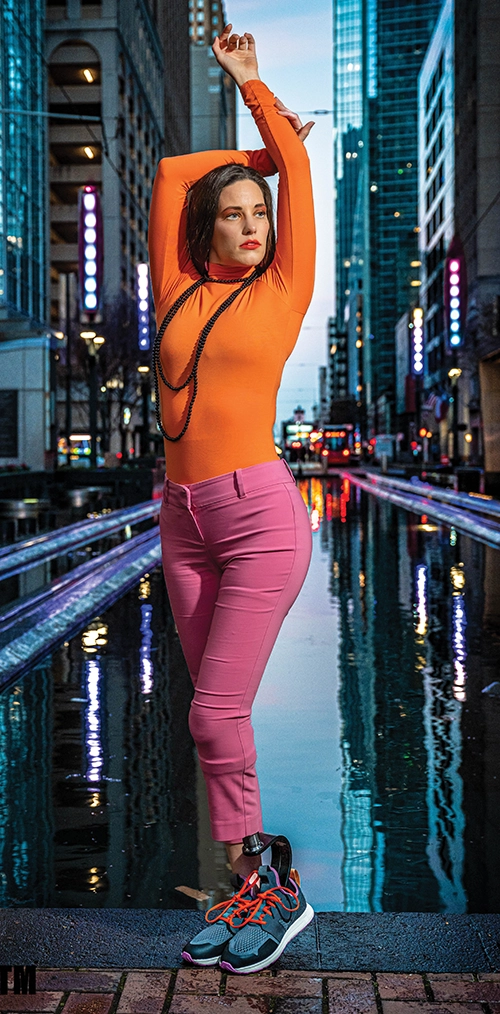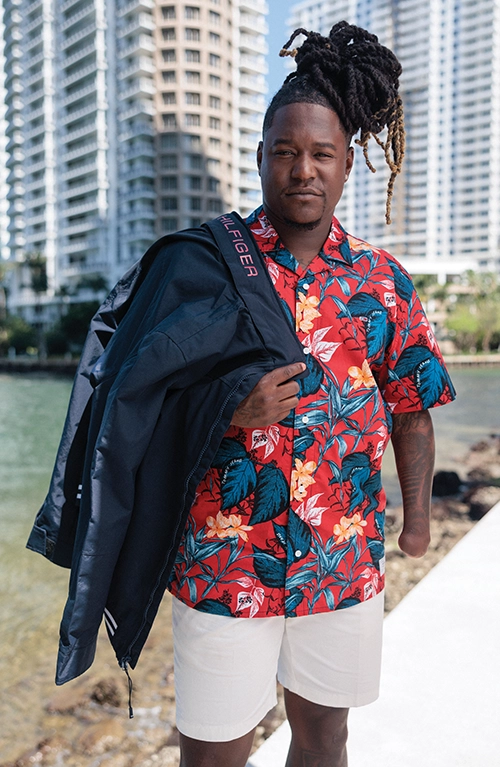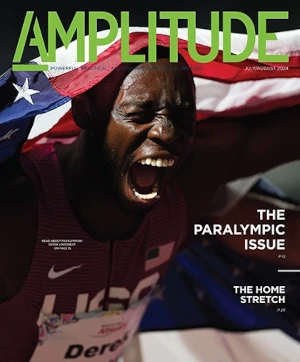The Runway of Dreams Foundation’s annual New York Fashion Week show is always a happening, and never more so than in 2023.

In addition to showcasing more models (70-plus) and brands (15-plus) than ever, this year’s NYFW gala represents the climax of the summer-long Campaign for Inclusion, a multimedia initiative that brought new awareness to accessible fashion. The NYFW show will feature the debut of Victoria’s Secret’s first-ever line of adaptive lingerie, and former Seattle Seahawk Shaquem Griffin—the only amputee player in NFL history—will serve as emcee. And following the main event on September 13, Runway of Dreams will host a first-of-its-kind weekend exhibition of adaptive designs from major retailers, specialty brands, and everything in between. The free exhibition runs September 14-16 at Hudson Yards; get more information here.
It all adds up to Runway of Dreams’ biggest NYFW program yet, and another major step toward the normalization of stylish clothing for people with disabilities. And it’s not just about the clothes. Amplitude spoke with three amputees who’ll be participating in the NYFW show, and they all told us Runway of Dreams runs much deeper than what they wear on their bodies. It affects their hearts and minds, too. Read on to get their perspectives, in their own words.

CAITLIN CONNER
- Age 30ish
- Lives in Texas
- Day job: digital marketer, disability advocate
- Website: bemoreadaptive.org
- Instagram @caitlin.andherlegnamed.rex
Runway of Dreams is unconventional because you see models smiling and giving a little extra twirl. You don’t normally see that on New York runways, because there’s this culture that the designers are putting out these magnificent pieces and the model is just a hanger for the clothing. Runway of Dreams gives those designers the opportunity to literally show how their clothing gives life to the models. You don’t get that in any other show.
As a model who [works outside] the disability realm, I think it’s important to branch out and then come back toward the disability realm. It’s important to get across the fact that I can look like everybody else and still be different. I can rep these mainstream brands and normalize disability, but we need different things when we have disabilities. So it’s important to cross the bridge both ways. We have to be included like everybody else in the mainstream, but we also have to support brands that are actually listening to our voices, recognizing the need to do things differently, and understanding that everybody can and will have a disability at some point in their lifetime.
The disability community does have money. And we’re more likely to support brands that are supporting us. So they’re missing a major profitability margin if they fall into that fallacy that people with disabilities don’t buy clothes. The other thing they’re missing is that I’m a walking billboard, the way people stare at my prosthetic, because disability is still sort of taboo. So it’s a way to get their brand out there. They’re totally missing out on that. It’s as simple as hiring disabled talent and letting us be your billboard until we no longer need a billboard and disability is considered normal.

JOSEPH TIDD
- Age 5
- Lives in Florida
- Day job: kindergartner
- Instagram @tiddbit_outta_hand
Remarks from Colleen Tidd, JoJo’s mother.
JoJo’s a very competent, but also very independent five-year-old. He wants to do everything himself. There was one time where I tried to help him with something, and he said, “No, Mom, that doesn’t work.” And ever since, I’ve stepped back and let him try to figure it out. Because I don’t know what works for him. I have two hands. So I can’t give him instructions and feel comfortable and competent that what I’m telling him is actually going to work for him. Adaptive clothing lines give him the confidence and the independence to do things himself, and that’s huge. And it makes me feel more comfortable not having to worry about how he’s going to do things by himself when he starts school this fall.
Adaptive clothing just brings more awareness of people with disabilities, and that way it’s not all on us to do the teaching. It happens to Joseph daily. Even at this young age, he’s educating people every day. His friends are very curious. He might say something as simple as “I was born this way,” or he might elaborate on the whole story [of congenital limb difference]. But as a family, all of us are having to educate literally daily. So when more people have seen a person [with a disability] on TV, or they have seen someone in a Target ad, or on a fashion runway, it helps other people understand.

Clothes by Tommy Adaptive.
SHAQUEM GRIFFIN
- Age 28
- Lives in Florida
- Day job: public speaker
- Website: shaquem.com
- Instagram @shaquem_griffin
Growing up, I didn’t like to show my hand in pictures or public situations. I used to put it behind my back. You have to find your own confidence that everybody wants to see you and love you, and your clothes can help you feel that. You want to feel confident, you want to feel beautiful. You want to be able to show your attributes as a sign of strength, not a weakness. Don’t feel like you shouldn’t be seen. Everybody’s gonna see you, everybody’s gonna want to talk to you, everybody’s gonna gravitate to you. How do we get everybody to feel that?
When I played football, I was a big believer in “Look good, feel good, play good.” What really drives the Runway of Dreams is that it allows you to have that confidence to say, “I can look as good as anyone, I don’t have to be limited to certain clothing.” When I was growing up, there was certain clothing I wanted to wear but I couldn’t. Even after I got to the NFL and I was able to buy more clothes, it was still really hard. I didn’t want to feel like I had to eliminate myself from wearing nice things. But once you start putting certain people out there who have one hand or one leg, it just creates awareness that is getting bigger and bigger each year. And the more brands see it, the more they’re going to embrace it.
To meet more amputee models from the Runway of Dreams, click here.




